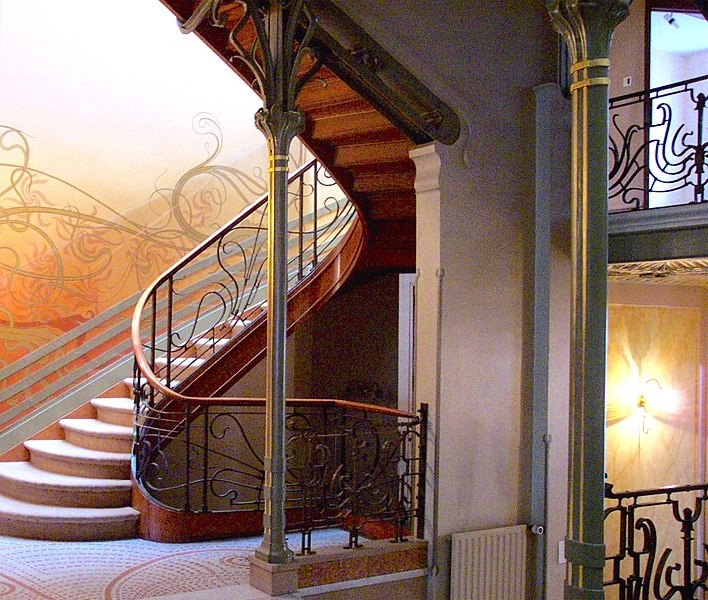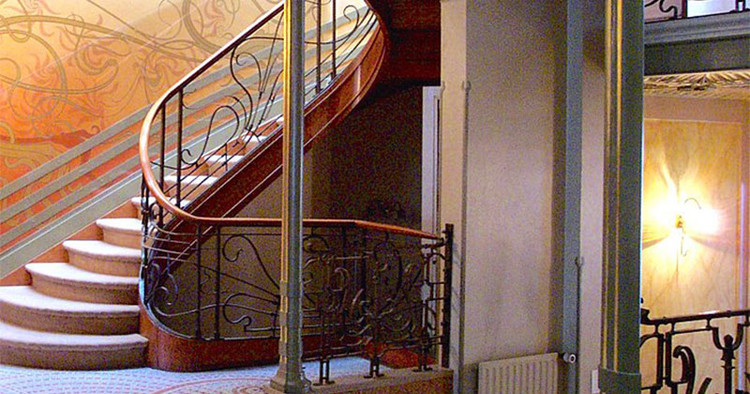
Situated throughout Brussels, Victor Horta's architecture ranges from innocuous to avant-garde. While many of his buildings were completed in the traditional Beaux Arts style, it is Horta’s Art Nouveau works—most of them built as townhouses for the Belgian elite—that are most beloved. Emerging from the decorative arts tradition and, in some ways, anticipating the coming onslaught of modernism, Horta’s Art Nouveau buildings were erected during a fleeting decade: roughly 1893 to 1903.


Only upon close inspection does a Horta house stand out on a Brussels street. Intricately wrought iron balconies and column capitals take on plant-like forms across Horta’s Art Nouveau facades, but the architect employs a distinctive, organic pattern for each residence. Natural motifs continue into Horta’s interiors, where vines seem to grow in iron from trusses and in paint on wall murals.
.jpg?1529713229)

Along with similarly ecological designs on tiled floors and stained glass windows, these patterns create a fabricated naturalistic haven away from the street and city. Engaging Gesamtkunstwerk—or, “total work of art”—practices, the architect also produced customized furniture for each of the houses he designed. The plant forms in skylights and floor tiling are carried through to chairs and bureaus, where abstracted vines and animal forms bring everyday domestic objects to life. As David Dernie and Alastair Carew Cox write in their book on Horta, “The Style Horta attempted to be all pervasive, closed to outside influences and affecting every detail from brass hinge to mosaic floor. Quite literally one senses Horta’s hand in every part of the interiors, they are worlds unified by an artistic genius, and quite perturbing in their sense of isolation.”

Although Horta’s designs—much like those produced in the Arts and Crafts movement—are characterized by an emphasis on the natural world, his architectural works mark a deviation from the decorative arts tradition in their built and functional three-dimensionality. Also departing from the floral patterns of the Arts and Crafts movement, Horta famously said, “it is not the flower that I like to take as a decorative element, but the stem.”


Likewise, even though Horta’s buildings are rife with the kind of industrial materials that would come to define modern architecture (like glass and iron), they are generally used as ornament rather than for their functional properties. Curving and organic, the iron is not yet minimalist, but rather purposefully hand-crafted.

Although Horta’s work is often recognized as the most definitive example of Art Nouveau architecture, it is nonetheless deeply personalized. As a critic wrote of Horta in 1899, “[he] is not a builder, he is an artist. . . . he does not combine, he creates; he is of no school, he has assumed a genre; it is better than originality; it is mastery. He has a conception of line which belongs to him alone.”





_2.jpg?1529708825)





.jpg?1529708839)






.jpg?1529708839)


